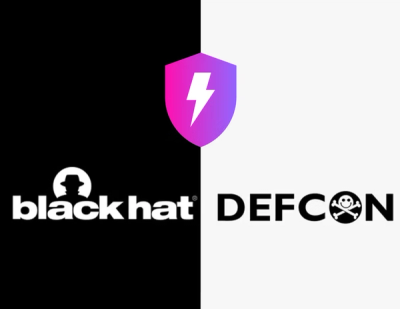api-nexus



Overview

api-nexus is a powerful tool for effortlessly generating comprehensive API documentation for both RESTful and GraphQL APIs. Whether you are building REST APIs or GraphQL schemas, this tool streamlines the documentation process, ensuring clarity and consistency.
Required
Node Version => 16.0.0
Features
-
Automatic Documentation Generation: Easily generate API documentation based on your RESTful endpoints and GraphQL schemas.
-
Separate REST and GraphQL Documentation: Create distinct documents for RESTful APIs and GraphQL APIs.
-
Developer-Friendly Markdown Format: The generated documentation is presented in Markdown format, making it easy to read and edit.
-
Customization Options: Customize the appearance and content of your API documentation to meet your project's specific needs.
-
Interactive GraphQL Playground: Include an interactive GraphQL Playground for users to experiment with queries.
Documentation View




1. Getting Started
Step 1: Install api-nexus
Step 2: Create a Config.yml File
- Create a
config.yml file in the root directory of your project. For an example configuration, refer to the [ config.yml Example here ]
Step 3: Set Environment Variables
Explanation:
- If authentication is defined in your
config.yml, provide the following environment variables:
DOC_USER=testDOC_PASSWORD=test
- The default server port is 3001. If you want to use a different port, set it with the
DOC_PORT environment variable:
- Add the environment for which you want to create the documentation:
Step 4: Update Package.json
Step 5: Generate Documentation
Step 6: Verify Generated Files
-
After running the command, a doc folder will be created in the root directory with the following structure:
doc
├── build
├── dist
├── graph
│ ├── introspection.json
│ └── graphMetaData.json
│
└── rest
└── restMetaData.json
-
Note: These files are auto-generated, and renaming them may cause issues in document generation.You can also create this folder structure in the root project directory manual to run the document.
-
[Introspection JSON Example here]
-
[graphMetaData JSON Example here]
-
[restMetaData JSON Example here]
Step 7: Include Code Lines in Your Project
-
Include the following code lines in your project to enable the documentation:
const express = require("express");
const app = express();
const path = require("path");
const documentApi = require(path.join(__dirname, "doc", "build", "server.cjs"));
documentApi('/api/my-app/document')
app.get("/health", async (req, res) => {
res.send("server is up");
});
app.use((err, req, res, next) => {
console.error(err.stack);
res.status(500).send("Something went wrong!");
});
const PORT = process.env.PORT || 3000;
app.listen(PORT, () => {
console.log(`Server is running on port ${PORT}`);
});
-
Note : Adjust the path variable to set the base path at which your document will be visible. For example, /api/document , /api-project/document, etc.
Step 8: Access Document Server
-
You can access the document server at the following URL with the specified base path:
>`domain:3001/api/my-app/document`
-
Note: If you have set the port to 4000, the URL will be accessible at domain:4000/api/my-app/document.
2. Getting Started With Docker & Nginx
3. Getting Started With Http-Proxies
-
If you prefer not to use Nginx for proxying, follow the steps below to serve the document using the HTTP proxy instead.
const express = require("express");
const app = express();
const path = require("path");
const { createProxyMiddleware } = require("http-proxy-middleware");
const documentApi = require(path.join(__dirname, "doc", "build", "server.cjs"));
documentApi('/api/document');
const documentProxy = createProxyMiddleware({
target: "http://domain:3001", // Replace with the actual destination server URL
changeOrigin: true,
});
app.use("/api/document", documentProxy);
app.get("/health", async (req, res) => {
res.send("server is up");
});
app.use((err, req, res, next) => {
console.error(err.stack);
res.status(500).send("Something went wrong!");
});
const PORT = process.env.PORT || 3000;
app.listen(PORT, () => {
console.log(`Server is running on port ${PORT}`);
});
-
With the above http proxy setup you can access the api-documentation at domain:3000/api/document.With the above setup you can access both the API with the same port.
Config.yml Options
| API Nexus | |
| env | ${DOC_ENV} | Specify the environment for documentation (Development, Qa, Staging, Production) |
| includeExample | true | Include example (true/false) [default=true] |
| Authentication | |
| documentUser | ${DOC_USER} | Default user is - [documentUser=test] |
| documentPassword | ${DOC_PASSWORD} | Default password is - [documentPassword=test@123] |
| Info | |
| title | Sample | Title for the main page [default=Sample] |
| logo |  | URL for the logo image [default=Logo] |
| includeDocumentType | both | Include document type (graph, rest, both) [default=both] |
| introduction | Welcome to our comprehensive guide on Application Programming Interfaces (APIs). ... | Introduction for the main page |
| graphDescription | Welcome to the GraphQL API Overview, your gateway to the future of data querying ... | Description for GraphQL API [default=some description] |
| restDescription | Welcome to the REST API Overview, your comprehensive resource for understanding and working ... | Description for REST API [default=some description] |
| REST | |
| title | REST | [default=Sample] |
| version | 2.0.0 | [default=1.0.0] |
| description | This comprehensive reference provides detailed information on the GraphQL types, ... | Description for REST API [default=Some description] |
| Servers | |
| url | https://sample-dev.com/api/rest | Server URL for REST API |
| env | Development | Environment for the server |
| headers | Authorization: <YOUR_TOKEN_HERE> | Headers for the server |
| GraphQL | |
| title | GraphQL | [default=Sample] |
| version | 2.1.0 | [default=1.0.0] |
| description | This comprehensive reference provides detailed information on the GraphQL types, ... | Description for GraphQL API [default=Some description] |
| GraphQL Introspection | |
| url | https://sample-dev.com/api/graphql | URL for GraphQL introspection [Make sure it is accessible and allowed to access] |
| overWriteEachTime | false | Overwrite introspection each time [default=false] |
| GraphQL Servers | |
| url | https://sample-dev.com/api/graphql/dev | Server URL for GraphQL API (Development) |
| env | Development | Environment for the server |
| headers | Authorization: <YOUR_TOKEN_HERE>, Content-Type: "application/json" | Headers for the server (Development) |
Note: You can replace <YOUR_TOKEN_HERE> with the actual token. The URLs and other values should be adjusted based on your specific configuration.











